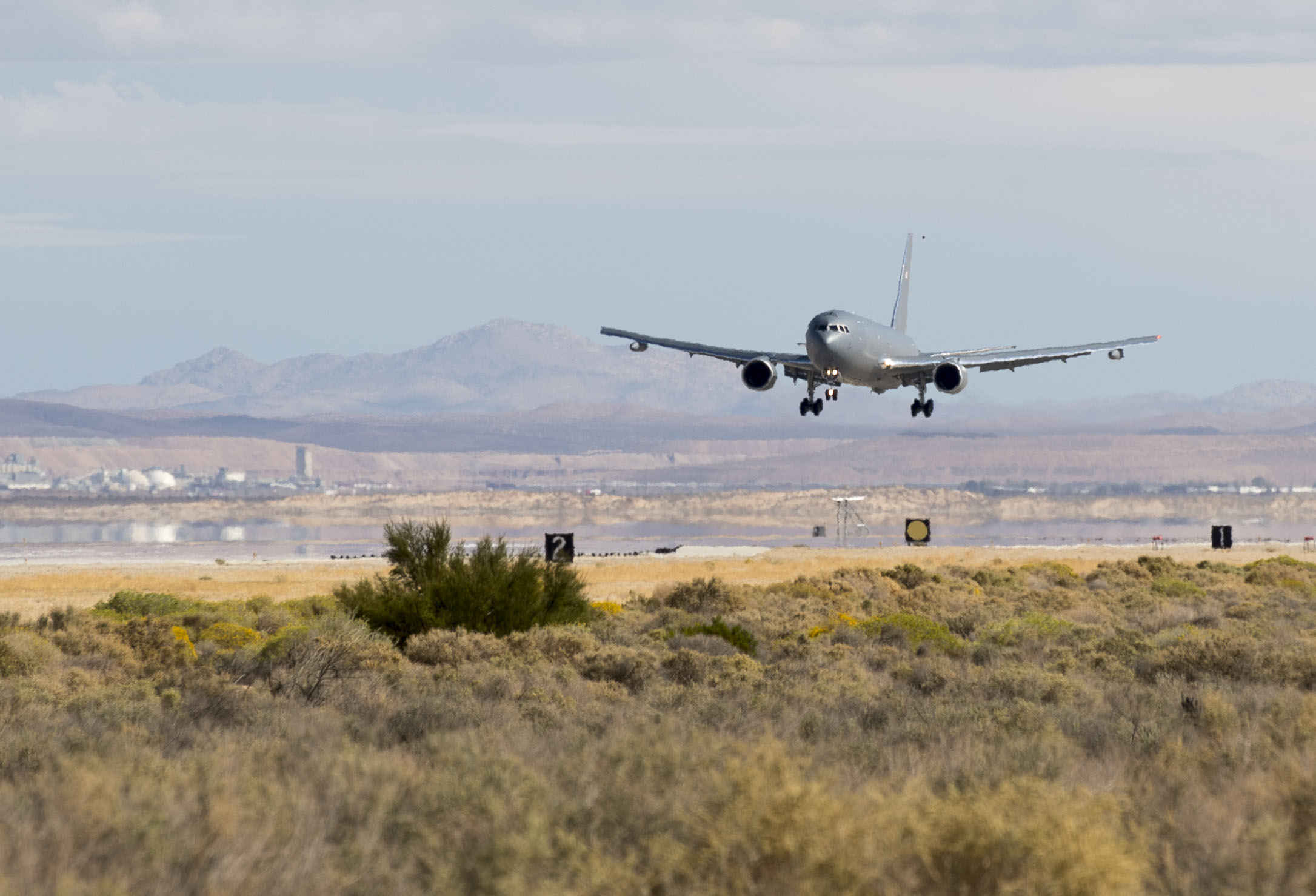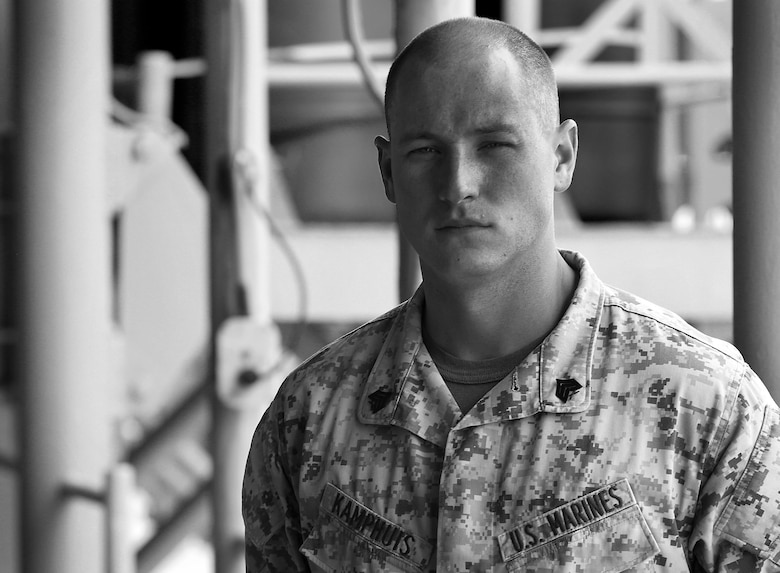By Kenji Thuloweit, 412th Test Wing Public Affairs /
Published October 22, 2015
EDWARDS AIR FORCE BASE, Calif. (AFNS) -- The KC-46 program's
first test aircraft, a Boeing 767-2C (EMD-1), departed from its home at Boeing
Field in Seattle and touched down here for the first time for testing Oct. 15.
The plan is to have EMD-1 at Edwards Air Force Base for
about two weeks, as Boeing and the 418th Flight Test Squadron conduct ground
effects and fuel onload fatigue testing on the new tanker.
Ground effects testing will gather aerodynamic data for
updating the KC-46A Pegasus simulator as well as supporting certification. Fuel
onload fatigue tests will gather data to characterize the aircraft interaction
typically experienced when the KC-46A is flying in receiver formation behind a
current KC-135 Stratotanker or KC-10 Extender.
While the KC-46's role is to refuel other aircraft, it too
may need to be refueled from other KC-10s or KC-135s to extend its range. Fuel
onload fatigue testing is the first look at the KC-46 acting in that role and
the interactions between the three different tankers in an aerial refueling
formation.
As throughout history, Edwards AFB continues to be the
premier base for flight testing the Air Force's newest capability.
"For ground effects, Edwards Air Force Base provides
calm morning weather and long runways, including the lakebeds, both are
requirements to take the data," said Capt. Dylan Neidorff, a KC-46 test
operations engineer. "For fuel onload fatigue, Edwards has a top notch
special instrumentation section who provides modifications to legacy tanker
aircraft to support data collection on the 767-2C."
Neidorff said Boeing and Air Force pilots have been
operating as combined crews through all of the testing at Edwards including the
ferry flight from Seattle.
"This also includes flight test engineers who have been
on each fuel onload fatigue flight,” he said.
Several units from both on and off base are supporting the
testing. The 412th Test Engineering Group is providing special instrumentation
support; the 416th Flight Test Squadron is providing chase aircraft support;
and the 370th FTS is providing KC-135 tanker crew support. The 92nd Air
Refueling Wing based at Fairchild AFB, Washington, is also providing the KC-135
and maintenance support, and the 60th Air Mobility Wing based at Travis AFB,
California, is providing the KC-10 and maintenance personnel.
According to Neidorff, the KC-46A will return to Edwards AFB
to accomplish testing in the Benefield Anechoic Chamber as well as conduct
aerial refueling certifications.
The KC-46A is intended to replace the Air Force's aging
tanker fleet, which has been refueling aircraft for more than 50 years. With
more refueling capacity and enhanced capabilities, improved efficiency and
increased capabilities for cargo and aeromedical evacuation, the KC-46A will
provide aerial refueling support to the Air Force, Navy, Marine Corps as well
as allied nation coalition force aircraft.
The 412th Test Wing at Edwards AFB is the lead developmental
test organization for the KC-46 program.









